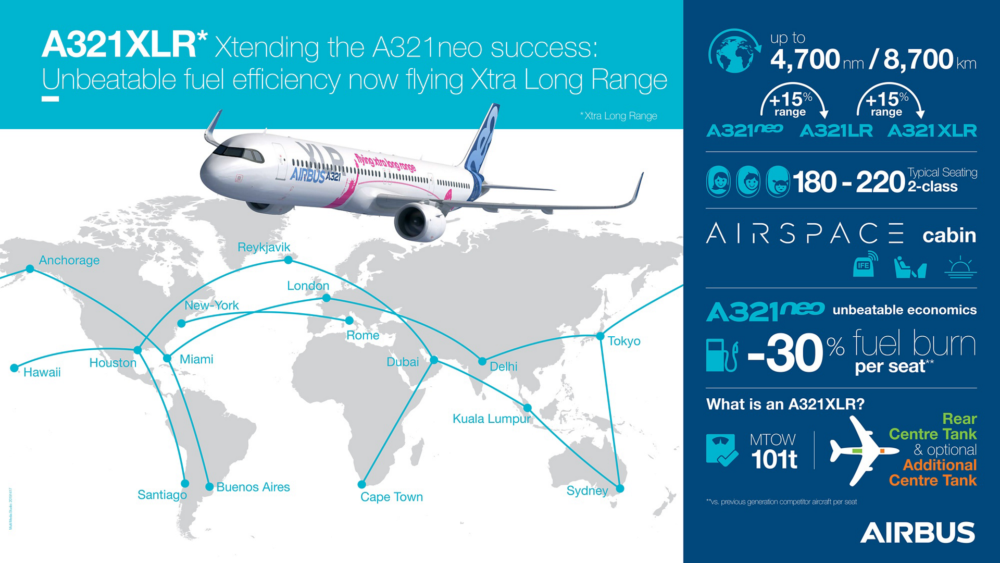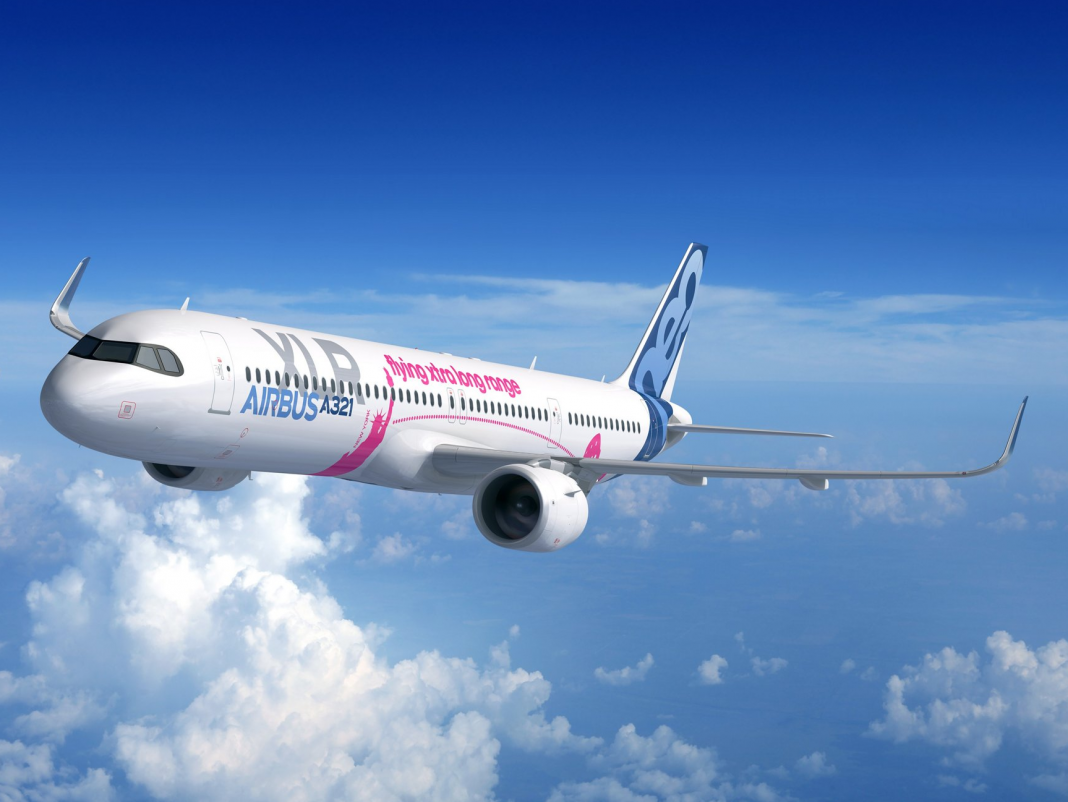The events of 2020 have fundamentally altered the future of commercial aviation. With dwindling passenger numbers rendering quadjet aircraft largely obsolete, the future of long-haul flying has become increasingly dependent on twin-engine aircraft.
Airbus appears to have struck gold with its latest development of the A320neo family, the A321XLR. Image: Airbus
For example, Boeing’s upcoming 777X series is a commitment to the future of twinjet long-haul travel. However, the uniquely challenging and unprecedented circumstances faced by commercial aviation this year have seen another aircraft emerge as a future game-changer for the airline industry – the Airbus A321XLR.
The A320neo family
The Airbus A321XLR is the latest development in the European manufacturer’s A320neo family. ‘Neo’ stands for ‘new engine option.’ These aircraft boast significant advantages compared to the original ‘ceo’ (‘current engine option’) variants of the A320 family.
The new engine technology utilized on these aircraft results in increased fuel efficiency. This leads to a winning combination for airlines of lower operating costs and increased aircraft range. The new engines are also quieter, making for a more pleasant experience from a passenger perspective as well.

Stay informed: Sign up for our daily aviation news digest.
Introducing the Airbus A321XLR
In addition to the A321neo, Airbus is also producing a long-range variant, known as the A321LR. This is the aircraft that American low-cost carrier JetBlue intends to utilize on its long-awaited services between the US East Coast and London. It has a range of 7,400 km (4,000 NM) and uses additional fuel tanks at the center of the aircraft to enable long-haul operations including transatlantic flights.
However, this is not even the longest-range variant of the A321neo series. While the A321LR boasts a 15% increase in range over the standard A321neo, it is outranked by the same percentage again by the proposed A321XLR.

Capable of flights as long as 8,700 km (4,700 NM), it has exactly twice the range of the first A321ceo design. Airbus plans for the A321XLR to enter the market in 2023. It is currently on track to meet this target, despite the difficulties posed by the ongoing coronavirus pandemic. Last month, Simple Flying reported that Airbus would begin constructing the dedicated assembly line for the aircraft next June. If all goes to plan, Airbus expects the assembly line to go live by the summer of 2022.
One can see some of the routes that the A321XLR might operate in the graphic above. A key factor in the aircraft’s impressive range is its increased maximum takeoff weight (MTOW). This has enabled Airbus to work an additional rear center tank into its design, capable of holding 12,900 liters of fuel.
An instant hit with prospective operators
Since its launch at the 2019 Paris Air Show, many airlines have taken a strong interest in the Airbus A321XLR. As of August this year, over 450 examples of the type had already been ordered.

The largest orders have been placed by American Airlines and United, both of whom will receive 50 examples of the type. American’s deliveries will commence in 2023, with United receiving its first A321XLR the following year. Other significant orders (more than 10 examples) include:
- Qantas – 36 aircraft.
- AirAsia X – 30 aircraft.
- Air Arabia, Wizz Air – 20 aircraft.
- Frontier – 18 aircraft.
- VietJet – 15 aircraft.
- JetBlue, JetSMART – 13 aircraft.
Environmental advantages
In many ways, the Airbus A321XLR is an aircraft that reflects the contemporary market’s wants and needs. One way in which it does so is through its numerous environmental advantages. Airbus cites these as including:
- 20% lower fuel burn per seat.
- 5,000 tonnes less CO2 per year.
- 50% lower noise pollution footprint for both passengers and airports.

In an age when environmental factors are becoming increasingly prevalent in influencing many people’s travel choices, these advantages are sure to be crucial in ensuring that passengers can fly long-haul with a cleaner conscience.
The perfect post-coronavirus aircraft
Another way that the A321XLR is well-suited to the world as we know it is one that Airbus could not have foreseen at the time of its launch. This year has seen passenger demand levels plummet worldwide as a result of COVID-19. This has resulted in accelerated retirements for many quadjet long-haul airliners, with operators now seeing twin-jets as the future of long-haul.
However, it is unlikely that, even in a post-crisis world, demand levels will swiftly return to the levels that we knew pre-coronavirus. Even next-generation twinjet widebodies such as the Airbus A330neo and Boeing 777X could prove cost-ineffective if airlines cannot fill them. However, this is where the Airbus A321XLR will really prove to be a game-changer.

Its lower-capacity long-range capabilities will see it strike a perfect balance on so-called ‘long thin routes.’ This term describes corridors where there is sufficient demand to operate a service of some sort, but not enough to warrant the use of a widebody.
Passenger demand levels are set to remain low for the foreseeable future. As such, more and more routes will find themselves falling under this category. The A321XLR will fill this gap perfectly, and thus finds itself unexpectedly emerging from the current crisis as an ideal post-coronavirus aircraft.

Conclusion
All in all, the Airbus A321XLR appears to be the game-changer that commercial aviation needs. It is set to markedly change the way we fly, and perhaps even industry trends as a whole. The uniquely challenging year that 2020 has proven to be has only reinforced its middle-market potential.
Though Airbus couldn’t have known it at the time of its launch, these immensely challenging 12 months may just prove a blessing in disguise for its brilliant, game-changing narrowbody long-haul twinjet airliner. We shall await the project’s further development over the coming years with great anticipation.
What sort of an impact do you think the Airbus A321XLR will have on commercial aviation? Have you ever flown long-haul on a single-aisle aircraft before? Let us know your thoughts and experiences in the comments.
[ad_2]
Source link



